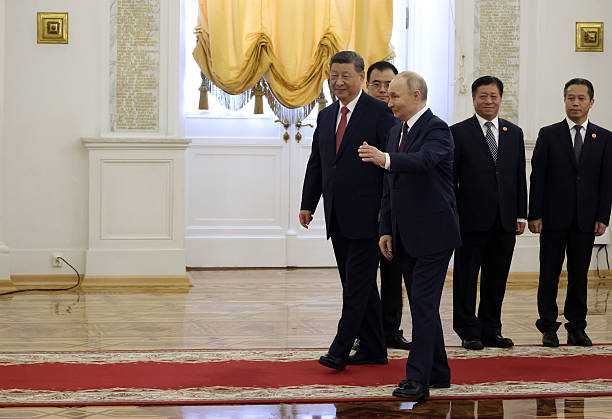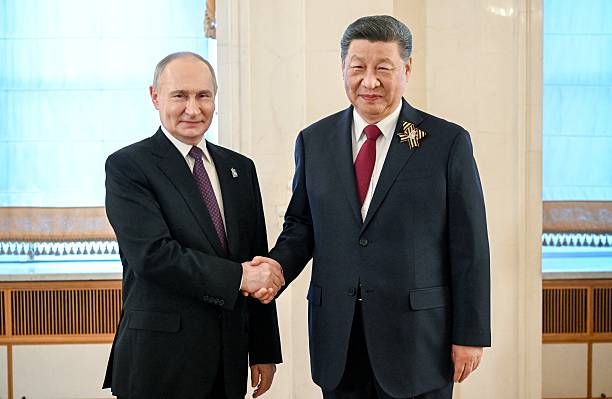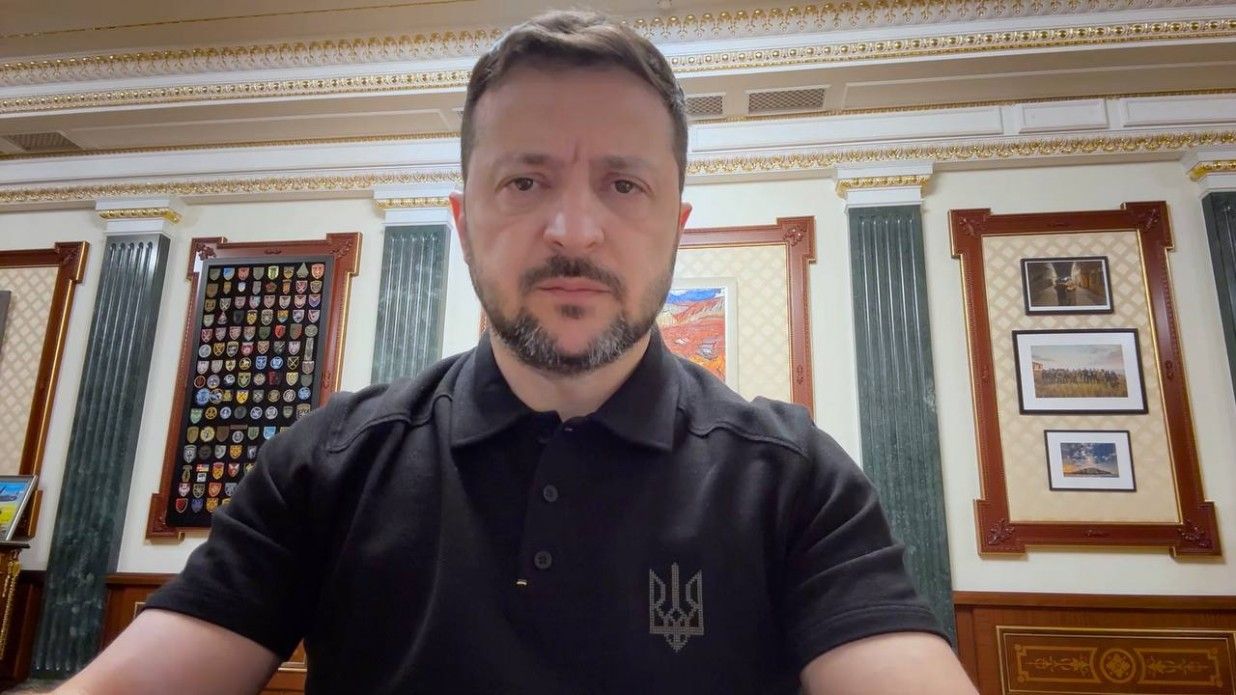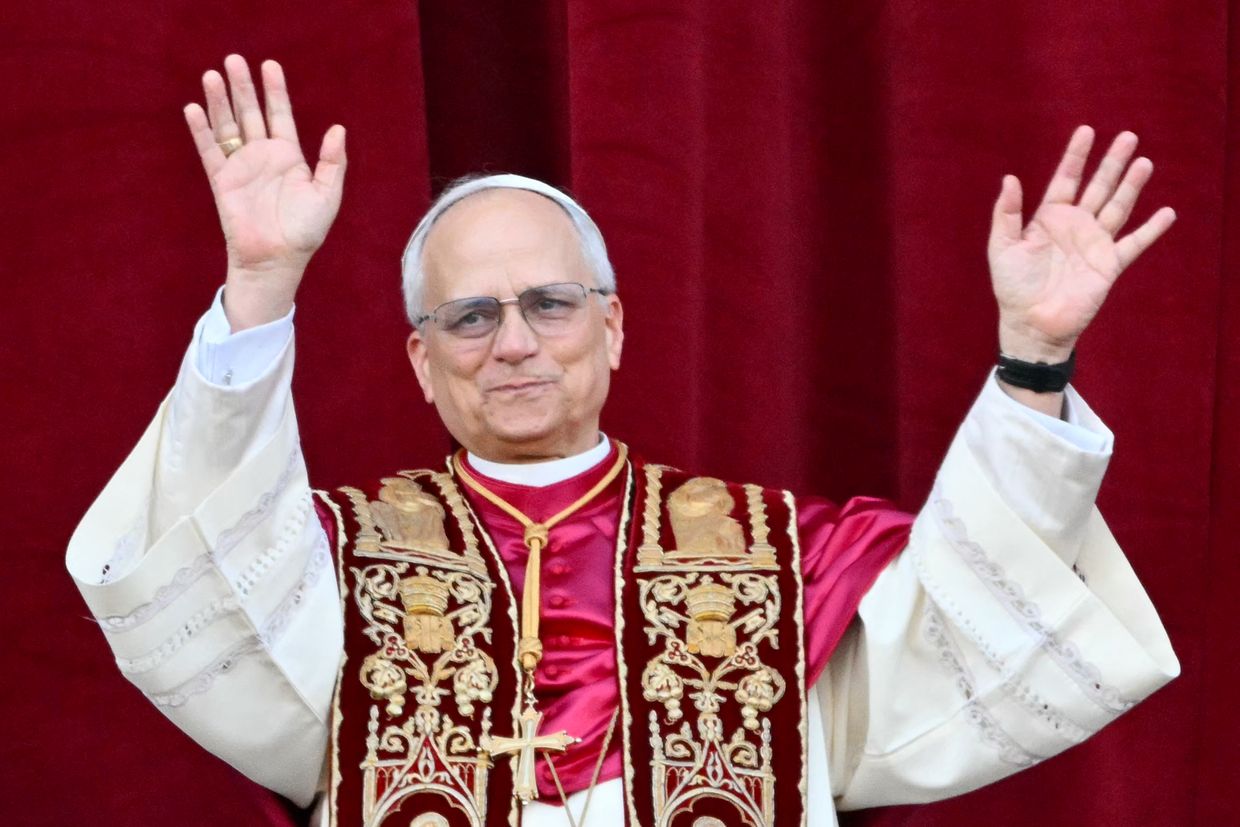As Xi Jinping Arrives in Moscow for Talks with Putin, Russia’s Unilateral Ceasefire Shatters with Hundreds of Front Line Violations While Ukraine Ratifies Landmark US Minerals Deal
Summary of the Day – May 8, 2025
Russia’s unilateral Victory Day ceasefire collapsed as Ukrainian officials documented over 700 violations across the front lines, with guided bomb strikes killing civilians in Sumy Oblast and 117 combat clashes reported by day’s end. Chinese President Xi Jinping arrived in Moscow for talks with Vladimir Putin, strengthening their alliance with a joint statement condemning “Western hegemony.” President Zelensky spoke with Trump, reiterating Ukraine’s readiness for a full 30-day ceasefire rather than Russia’s three-day pause. The Ukrainian parliament ratified the US-Ukraine minerals deal with overwhelming support, while the European Parliament passed a resolution condemning Russia’s deportation of Ukrainian children as a “genocidal strategy.” Ukraine also received 1 billion euros from the EU under the G7’s Extraordinary Revenue Acceleration initiative, secured by proceeds from frozen Russian assets.

Russian President Vladimir Putin and Chinese President Xi Jinping enter the hall during their meeting at the the Kremlin in Moscow, Russia. President Putin welcomed Chinese Leader Xi Jinping in Moscow for a four-day visit centred around Russia’s ‘Victory Day’ celebrations, commemorating the end of the World War II. (Contributor/Getty Images)
Russia’s Ceasefire Violations: Hundreds of Attacks Across Ukraine
Russia’s self-declared Victory Day “humanitarian ceasefire” collapsed within hours of its implementation at midnight on May 8. Ukrainian Foreign Minister Andriy Sybiha revealed that by noon, Russian forces had committed 734 ceasefire violations, including 63 assault operations, 176 drone strikes, and 10 air strikes using guided bombs.
“Predictably, Putin’s ‘Parade ceasefire’ proves to be a farce,” Sybiha wrote on social media. “We are responding appropriately to all attacks and sharing all relevant information about Russia’s violations with the US, the EU, and other international organizations.”
The first violations were reported at 2:45 a.m. when Russia struck the Sumy region with guided aerial bombs. Approximately 15 minutes later, another attack in the same region killed a 55-year-old woman and injured her 24-year-old son. Ukraine’s General Staff reported that by the end of the day, Ukrainian forces had faced 117 combat clashes across the front, with most battles occurring in Donetsk Oblast, where Russian troops launched 41 assaults on the Pokrovsk front alone.
In Kharkiv Oblast, three women aged 18, 30, and 58 were injured when a Russian FPV drone struck their car. According to Viacheslav Zadorenko, head of the Dergachiv Military Administration, the women had believed the ceasefire was genuine and had gone to their garden to plant potatoes when they were attacked.
“There is no ceasefire. There is shelling, artillery, drone and FPV bomb drops,” said Petro Kuzyk, a battalion commander with the National Guard, describing the situation across Ukraine’s defensive lines.
Xi-Putin Summit: Strategic Partnership Strengthens in Moscow
Chinese President Xi Jinping arrived in Moscow on May 8 for a four-day state visit, meeting with Russian President Vladimir Putin at the Kremlin in a display of deepening cooperation between the two countries. The Chinese leader was greeted as Putin’s “dear friend” during their ceremonial encounter in the Grand Kremlin Palace.

Russian President Vladimir Putin and Chinese President Xi Jinping, who arrived in the Kremlin for a gala concert for heads of foreign delegations attending the 80th anniversary of Victory in the Great Patriotic War, in Moscow, Russia. (Sergey Bobylev/Anadolu via Getty Images)
The meeting produced a joint statement in which both leaders vowed to “strengthen coordination in order to decisively counter Washington’s course of ‘dual containment’ of Russia and China.” They condemned the use of tariffs and “unilateral illegitimate restrictive measures,” a direct criticism of US policies under President Trump’s administration.
“Together with our Chinese friends, we firmly stand on guard of historical truth, protect the memory of events of the war years and counter modern manifestations of neo-Nazism and militarism,” Putin declared, employing the same World War II rhetoric he has used to justify Russia’s invasion of Ukraine.
The joint statement also referenced the Ukraine war, with both countries expressing their commitment to contribute to the establishment of peace while addressing what they termed the “root causes” of the conflict—language that echoes Russia’s demands for Ukraine’s demilitarization and neutrality. This marks a notable shift in China’s public position, as Beijing had previously attributed such terminology solely to Kremlin officials.
Xi is in Moscow as the “guest of honor” for Russia’s Victory Day parade scheduled for May 9, which will commemorate the 80th anniversary of the Soviet victory over Nazi Germany. His presence provides Putin with important international support amid Western isolation over the Ukraine war.
Trump-Zelensky Call: Push for Comprehensive Ceasefire
Ukrainian President Volodymyr Zelensky held a telephone conversation with US President Donald Trump on May 8, discussing the war, continued pressure on Russia, and efforts toward a more substantial ceasefire. The call, which reportedly “went very well” and lasted about 20 minutes, came amid Russia’s three-day unilateral ceasefire declaration.
“Thirty days, which could be the beginning of years of peace. It is a ceasefire, lasting and reliable, which would be a real indicator of the movement toward peace. America can help with this,” Zelensky stated in a post on Telegram following the call.
Zelensky emphasized Ukraine’s readiness for a full ceasefire starting immediately, one that would include the cessation of missile and drone attacks as well as assaults at the front. He stressed that such a ceasefire must be genuine and not merely a symbolic gesture timed for Russia’s Victory Day parade.

President Volodymyr Zelensky delivers an address. (Photo: Presidential Office)
“The Russians need to respond to this adequately: support the ceasefire. They must prove their readiness to end the war,” Zelensky said, underscoring Ukraine’s position that any lasting peace must be based on justice.
Following the call, Trump expressed his commitment to securing peace, writing on social media: “As President, I will stay committed to securing Peace between Russia and Ukraine, together with the Europeans, and a Lasting Peace it will be.” He added that if the ceasefire is not respected, “the US and its partners will impose further sanctions.”
Minerals Deal Ratified: Economic Foundation for Ukraine’s Future
In a significant legislative development, the Ukrainian parliament ratified the US-Ukraine minerals deal on May 8, with 338 MPs voting in favor of the agreement. The document, signed on April 30, establishes a joint investment fund between Kyiv and Washington and provides the United States with preferential access to projects developing Ukraine’s natural resources.
President Zelensky welcomed the ratification, describing it as “the most promising economic agreement between Ukraine and the US to date” and “joint investment cooperation with the US for decades to come.”
“I expect the ratification law to be submitted from the Verkhovna Rada to my Office soon. Once the legal procedures are complete, we will be able to begin establishing the Fund,” Zelensky wrote on social media.
The agreement represents the culmination of months of negotiations that at times tested US-Ukraine relations, particularly following a heated exchange between Zelensky and Trump at the White House in February. While the final deal does not include explicit security guarantees from the US, it avoids elements from earlier drafts that some experts had criticized as potentially exploitative.
Ukrainian Prime Minister Denys Shmyhal previously indicated that future US military aid could count as contributions to the joint investment fund, though past assistance would not be included. This arrangement could facilitate Ukraine’s long-term recovery while securing American interests in critical minerals found in Ukrainian territory.
Civilian Impact: Death and Injury Amid “Ceasefire”
Despite Russia’s proclaimed ceasefire, civilians across Ukraine continued to suffer from attacks on May 8. In Sumy Oblast, a Russian aerial bomb killed a 55-year-old woman in the Mykolaiv community at around 3 a.m. local time. Her 24-year-old son was injured in the same attack.
In Kharkiv Oblast, three women were injured when a Russian FPV drone struck their vehicle while they were working in their garden, having trusted that the ceasefire was genuine. Across the country, humanitarian conditions remained dire as essential infrastructure continued to be targeted.
Ukrainian authorities reported seven civilian deaths and 31 injuries over the past 24 hours across Ukraine, with some of these casualties occurring after the start of Moscow’s unilateral ceasefire. Russian strikes targeted homes, vehicles, and public spaces in Sumy, Kharkiv, Donetsk, Kherson, and Zaporizhzhia oblasts.
In Donetsk Oblast, which saw some of the heaviest fighting despite the declared ceasefire, six people were killed and 20 others injured prior to the midnight start of the truce, according to regional Governor Vadym Filashkin. The continued attacks against civilian areas highlighted the discrepancy between Russia’s public ceasefire declaration and the reality on the ground for Ukrainians.
International Reactions: EU Resolution and UN Report
International reactions to the ongoing conflict intensified on May 8, with the European Parliament overwhelmingly passing a resolution condemning Russia’s forcible deportation and Russification of Ukrainian children. The document, which passed with 516 votes in favor, three against, and 34 abstentions, called these actions a “genocidal strategy” aimed at erasing Ukrainian identity and demanded the unconditional return of all abducted minors.
The resolution urged EU member states to step up efforts to hold Moscow accountable through international courts and support Ukraine’s campaign to bring its children home. Since the start of Russia’s full-scale invasion, Ukraine has identified over 19,500 children illegally transferred to Russia, Belarus, or Russian-occupied territories, with fewer than 1,300 returned.
On the same day, the United Nations Human Rights Monitoring Mission in Ukraine released a troubling report revealing that April 2025 was the deadliest month for Ukrainian civilians since September 2024. The report documented 209 civilian deaths and 1,146 injuries during April—a 23% increase from March and an alarming 84% increase from April 2024.
“One of the main reasons for the sharp rise in civilian casualties was the intensified use of ballistic missiles in major cities across the country,” said Danielle Bell, Head of HRMMU. The high casualty figures underscored the human cost of the war even as Russia proclaimed a ceasefire.
German President Frank-Walter Steinmeier delivered a speech to the German parliament marking the 80th anniversary of Nazi Germany’s defeat, criticizing Russia’s “historical lies” regarding the Ukraine war. “The war against Ukraine is not a continuation of the fight against fascism,” Steinmeier said. “Putin’s war of aggression has nothing in common with the fight against Nazi tyranny in World War II.”
French President Emmanuel Macron, at ceremonies marking the anniversary of Nazi Germany’s capitulation, warned that “the specter of war had returned in Europe” after ideas of perpetual peace following World War II had proven illusory.
Religious Leadership: New Pope Elected Amid War
On May 8, amid the backdrop of war in Ukraine, American-born Cardinal Robert Prevost was elected the new pope and leader of the Roman Catholic Church, taking the name Pope Leo XIV. President Zelensky congratulated the new pontiff on his election, expressing hope for the Vatican’s continued moral and spiritual support for Ukraine.

Newly elected Pope Leo XIV, Robert Prevost arrives on the main central loggia balcony of the St Peter’s Basilica for the first time, in The Vatican. (Photo by ALBERTO PIZZOLI/AFP via Getty Images)
“At this decisive moment for our country, we hope for the continued moral and spiritual support of the Vatican in Ukraine’s efforts to restore justice and achieve a lasting peace,” Zelensky said in a social media post.
The 69-year-old Prevost, born in Chicago and holding dual US-Peruvian citizenship, becomes the first American to lead the Catholic Church. His election comes at a critical time for Ukraine, which is home to a sizeable Greek Catholic population that has grown from 8% to 12% of the population between 2014 and 2024.
The new pontiff pledged to continue the legacy of his predecessor, Pope Francis, who died in April. Francis had left a divided legacy in Ukraine, at times expressing support for the country while also making statements perceived as conciliatory toward Russian narratives about the war. Nevertheless, he consistently called for peace and a comprehensive prisoner exchange between Kyiv and Moscow.
Military Situation: Combat Continues Across Multiple Fronts
Despite Russia’s declared ceasefire, active combat operations continued across the entire front line on May 8. The Ukrainian General Staff reported 117 combat clashes during the day, with Russian forces showing no signs of halting their offensive operations.
On the Kursk front, geolocated footage published on May 8 showed that Russian forces had recently advanced to the international border south of Oleshnya (southeast of Sudzha). Simultaneously, Ukrainian forces were confirmed to have advanced along Chapayeva Street in southwestern Tetkino and southeast of the settlement. Russian milbloggers claimed that Ukrainian forces attacked toward Tetkino and Novyi Put despite the ceasefire.
In northern Sumy Oblast, recent advances by Russian forces were documented, with geolocated footage showing Russian troops in central Loknya (northeast of Sumy City). A Russian milblogger claimed on May 8 that Russian forces advanced near Vodolahy, Bilovody, and Loknya, while also accusing Ukrainian forces of violating the ceasefire near Bilovody.
In the Kharkiv direction, Ukrainian sources reported that Russian forces violated the ceasefire with attacks in unspecified areas of northern Kharkiv Oblast. Ukrainian Kharkiv Oblast Military Administration Head Oleh Synehubov stated that fighting was ongoing in northern Kharkiv Oblast and in the Kupyansk direction.
In the Pokrovsk direction, Russian troops launched 41 assaults, making it one of the most fiercely contested sectors of the front. Clashes also occurred near Chasiv Yar, Kupiansk, and Lyman in Donetsk Oblast, while Russian troops continued attacks around Siversk, Torske, and in parts of Kharkiv Oblast.
“It’s been the fourth day of Russian assaults and force accumulation along the front line, and their aviation is working every day,” reported a special forces sniper with the callsign “Bart” fighting in Zaporizhzhia Oblast. In Donetsk Oblast, a drone unit deputy commander described the situation as “a little quieter for now but not by much,” confirming that Russian drones remained highly active in the area.
The pattern of fighting on May 8 confirmed assessments that Russia might be using the declared ceasefire to rest troops and position forces for further attacks while creating an illusion of openness to peace.
Drone Operations: Moscow Airports Disrupted Amid Aerial Warfare
In a notable shift from recent patterns, no Russian combat drones were detected over Ukrainian airspace during the night of May 7-8, marking a rare pause in Russia’s near-daily drone assaults. However, this respite did not extend to other forms of aerial warfare, as Russian forces intensified tactical aviation strikes using guided aerial bombs, particularly in Sumy Oblast.
The Ukrainian Air Force reported that as of 8:00 a.m. on May 8, no missile attacks or attack drones had been recorded in Ukrainian airspace, though guided bomb strikes continued in border regions. This partial reduction in aerial activity suggested a strategic decision by Russian forces to limit certain types of attacks while maintaining others, possibly to create an impression of ceasefire compliance while continuing combat operations.
Meanwhile, Moscow’s airports faced significant disruptions on May 8 due to ongoing Ukrainian drone attacks. Multiple airports in the Russian capital were temporarily closed, paralyzing air traffic just as Russians were traveling for holidays during the days leading up to Victory Day. These closures affected the travel plans of several foreign officials heading to Moscow for the May 9 celebrations, including Serbian President Aleksandar Vucic, whose flight was initially unable to reach the Russian capital due to Ukrainian drone activity and had to make a stopover in Baku.
Throughout the day, Ukrainian forces reported continued use of FPV (first-person view) drones by Russian forces along the front lines. These small, maneuverable drones carrying explosive payloads were employed against both military positions and civilian targets, including the strike on the civilian vehicle in Kharkiv Oblast.
Ukraine’s Unmanned Systems Forces reported on May 8 that Ukrainian forces struck a Russian “Zaslon” radar system in Kursk Oblast, demonstrating Ukraine’s continued drone capabilities despite Russia’s declaration of a ceasefire.
Diplomatic Developments: Peace Efforts and EU Support
The collapse of Russia’s unilateral ceasefire on May 8 further complicated already stalled peace negotiations. Polish Foreign Minister Radoslaw Sikorski suggested that either Turkey or China could serve as capable mediators if the United States were to pull out of negotiations, reflecting growing uncertainty about the future of diplomatic efforts.
“I hope the U.S. succeeds in ‘mediation efforts’ between Russia and Ukraine,” Sikorski told reporters following an EU Foreign Ministers meeting in Warsaw. “But if this path turns out to be unsuccessful, there are other candidates. There is Turkey, which maintains channels of communication. And then, above all, there is the People’s Republic of China.”
On the economic front, Ukraine received 1 billion euros ($1.1 billion) from the European Union on May 8 under the G7’s Extraordinary Revenue Acceleration (ERA) initiative. This mechanism, totaling $50 billion, provides loans to Ukraine that will be repaid using future profits from frozen Russian assets. This marks the fourth such tranche secured by proceeds from frozen Russian assets, bringing the EU’s total lending to Ukraine under this program to 6 billion euros since the start of the year.
Prime Minister Denys Shmyhal stated that the government would use the funds to “cover critical budget expenditures and strengthen the state,” calling it “part of a consistent and just response: the aggressor must pay for the devastation it has caused.”
Meanwhile, US Vice President JD Vance told Fox News that the US would be ready to “walk away” from the negotiating table if it did not see Russia making progress in negotiations to end the war. “What would bother me is if we conclude that the Russians are not engaging in negotiations in good faith. And if that happens, yeah, we’re going to walk away,” Vance said in the interview.
Despite these warnings, President Trump appeared to contradict his vice president following his call with Zelensky, stating he remained “committed” to securing a peace deal, calling for a “30-day unconditional ceasefire” and threatening further sanctions if the truce is violated.
Looking Ahead: The Path Forward Amid Uncertainty
As Moscow prepared for its May 9 Victory Day parade, the failure of the unilateral ceasefire cast a shadow over Russia’s attempts to project strength and normalize its international standing. The presence of Xi Jinping and other foreign leaders at the celebrations would provide Putin with a carefully orchestrated display of support, but the reality of continued fighting exposed the hollowness of Russia’s peace rhetoric.
For Ukraine, the ratification of the minerals deal with the United States offered a potential economic foundation for future reconstruction, though immediate security concerns remained paramount. Zelensky’s call with Trump and continued push for a comprehensive 30-day ceasefire indicated Ukraine’s commitment to a diplomatic solution, but only one based on genuine commitments from all parties.
The contrast between Russia’s brief, symbolic ceasefire gestures and Ukraine’s advocacy for a monitored, comprehensive truce illustrated the fundamental differences in how each side approached the path to ending the war. As May 8 concluded with fighting continuing across the front lines, the prospect of genuine peace remained distant without significant shifts in Russia’s position and approach.
The ongoing war’s human cost—evidenced by civilian casualties even during the declared ceasefire—underscored the urgent need for a genuine resolution. Yet with Russia continuing its military operations and China strengthening its support for Moscow, the immediate future seemed likely to bring more conflict rather than the peace that Ukrainians and much of the international community desperately sought.
